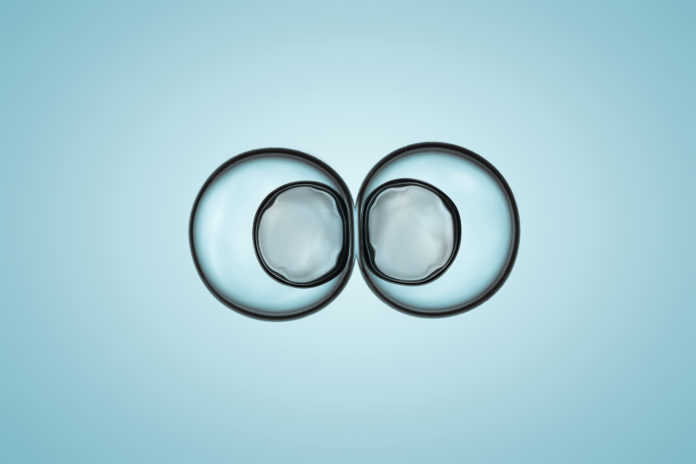New Discovery Pumps Up Evidence for Design
Nobody likes an infection. Most illnesses caused by bacteria present little more than a nuisance easily treated with a few doses of antibiotics. But some infections can be life-threatening and require carefully controlled administration of drugs. In such cases, physicians sometimes make use of a small, portable medical device powered by a peristaltic pump (see sidebar) to deliver the right amount of drugs through an IV to the patient.
Recently, two independent teams of biochemists studied the structure of a protein ensemble called the AcrA/AcrB/TolC complex (for simplicity hereafter, the ABC complex). Their research revealed that this protein assembly-embedded in the cell membranes of pathogenic bacteria-functions just like the pump that administers continual doses of antibiotics to patients.1 This fascinating discovery not only offers hope for understanding antibiotic resistance, but also demonstrates biomolecular design.
The ABC complex spans bacterial inner and outer membranes and imparts resistance to “noxious” chemicals (including antibiotics) in the environment. From this protective membrane position, the protein ensemble pumps structurally diverse compounds from the cell’s interior to the external environment. This pumping operation minimizes the intrusion of harmful materials in the cell, dramatically limiting their deleterious effects. As part of its action, the ABC complex also recognizes and removes a wide range of antibiotics from the cell. This activity confers pathogenic bacteria with multidrug resistance. Biochemists refer to ABC as a multidrug transporter (MDT) and expend considerable effort to understand its structure and function to be able to more effectively combat antibiotic resistance.
AcrB operates as the primary component of the ABC MDT, with AcrA and TolC serving as accessory proteins. AcrB consists of three identical protein subunits that span a bacterium’s inner membrane. The latest work on this protein complex indicates that the AcrB trimer (composed of three molecules) functions like a rotary motor. In response to the flow of positively charged hydrogen ions through the inner membrane (an electrical current), each subunit alternately binds antibiotics (or other offending materials) in the cell’s interior and, through a three-step rotation, pumps these materials using a peristaltic process into a compartment formed by the AcrA. The enclosure formed by AcrA bridges the space between the inner and outer membranes. Once in the AcrA port, the noxious materials (including antibiotics) are collected by a funnel-like structure that’s part of TolC. This protein spans the outer membrane. As undesirable materials pass through the TolC channel they are expelled into the cell’s exterior.
Discovery of a biomolecular peristaltic pump in bacterial membranes carries significance that extends beyond understanding multidrug resistance in bacteria. It stands as a powerful new piece of evidence for intelligent design. The ABC pump’s startling design and efficiency evoke the watchmaker argument.
| What is a peristaltic pump?
Peristaltic pumps are devices used to push fluids through a tube by positive displacement.* A flexible tube carefully positioned within a circular pump casing contains the fluid. A rotor fitted with rollers (or shoes or wipers) compresses part of the fluid-filled tube as it rotates. This compression causes the part of the tube in contact with the rotor to collapse, forcing the fluid through the tube. The tube then opens up as the rotor continues to turn, allowing fluid to flow from a reservoir into the pump (a process known as restitution). Peristaltic pumps are ideally suited for pumping sterile fluids, like antibiotic solutions, because the fluid never comes into contact with the rotor and won’t become contaminated. For more discussion of peristaltic pumps see “Peristaltic Pump,” Wikipedia, https://en.wikipedia.org/wiki/Peristaltic_pump, accessed August 31, 2006. |
Most famously articulated by British natural theologian William Paley in 1802, the watchmaker argument posits the existence of a Creator by comparing a watch to biological entities. Just as a watch is composed of a number of intricate parts that interact in a “just-so” fashion for the purpose of telling time, biological systems also are composed of finely tuned, interacting components that serve to make organisms perfectly suited for their environments. A watch requires a watchmaker. By analogy, biological entities require a Creator.
Critics who challenge the watchmaker argument maintain that this conclusion follows only if there is a high degree of similarity between the compared objects. They cite the many differences between watches and biological systems and conclude that the analogy is flawed.
However, the uncanny resemblance between the ABC complex and man-made machines goes a long way toward addressing this legitimate concern. The ABC complex is, in the most literal sense, a peristaltic pump. Moreover, this miniaturized apparatus is just one of many biomolecular complexes that are reminiscent of man-made machines and devices.2
If observers were to see a peristaltic pump strapped to a patient with a bacterial infection, they would rightly conclude that the device was produced by someone for a purpose. In like manner, the discovery of a molecular-level peristaltic pump in bacteria should be taken as evidence that an intelligent Agent produced this protein complex for a purpose: the removal of harmful materials, including antibiotics, from bacterial cells. As scientists gain understanding of nature’s exquisite configurations, the signature of Divine design becomes increasingly apparent.
Endnotes
- Shimon Schuldiner, “The Ins and Outs of Drug Transport,” Nature 443 (2006): 156-157; Markus A. Seeger et al., “Structural Asymmetry of AcrB Trimer Suggests a Peristaltic Pump Mechanism,” Science 313 (2006): 1295-98; Satoshi Murakami et al., “Crystal Structures of a Multidrug Transporter Reveal a Functionally Rotating Mechanism,” Nature 443 (2006): 173-79.
- Fazale Rana and Micah Lott, “Hume vs. Paley: These ‘Motors’ Settle the Debate,” Facts for Faith (Quarter 2 2000): 34-39.





